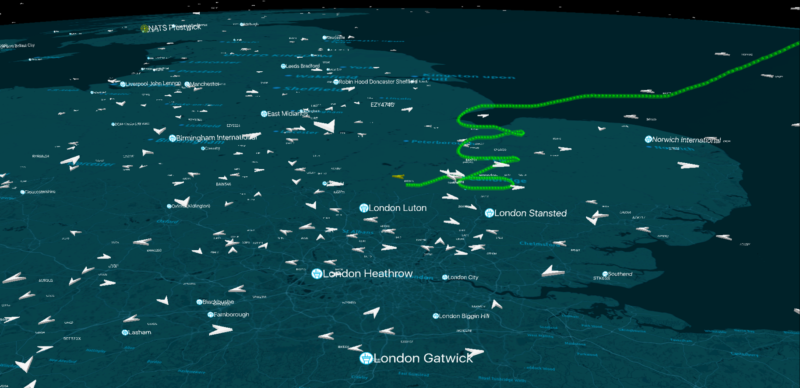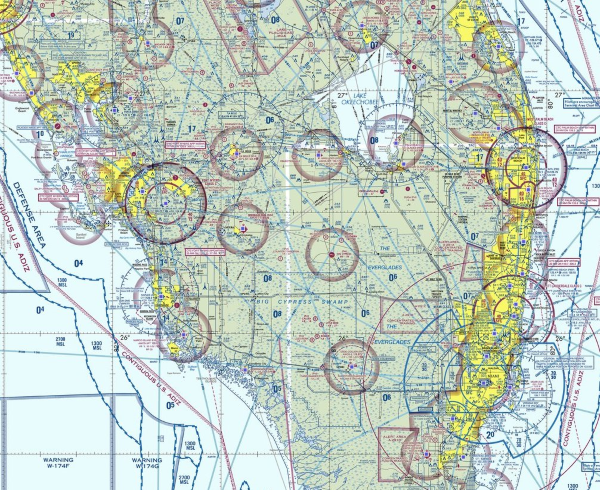class g airspace uk
Like Class E airspace you can fly through Class G airspace at airports the terminal environment and while en-route. Class G is uncontrolled airspace generally underneath and is exclusive of the Class E airspace.
Class G airspace uncontrolled is that portion of airspace that has not been designated as Class A Class B Class C Class D or Class E airspace.

. When approaching to land at an airport without an operating tower airplane must make all turns. Web Class E airspace is controlled and generally fills in the gaps between the other airspace. This means there are no restrictions on.
What Is Class G Airspace. Web THE CONTEXT FOR CLASS G AIRSPACE IN THE UNITED KINGDOM 31 Current Use of Class G Airspace 312 7KH 8V DLUVSDFH VVWHP KDV WR EDODQFH WKH VXSSO RI DLUVSDFH FDSDFLW ZLWK GHPDQG from a diverse range of users. If you want to start with that we have an article about Class E airspace here.
Air Traffic Services Chapter 2 Section 26 The services provided and flight requirements for different classes of airspace are shown in the table below. Web S11 Class G airspace in the UK continues to evolve and contain a very broad range of activity from Commercial Air Transport to high energy military to all types of sport and recreational flying. Rules governing VFR flight have been adopted to assist the pilot in meeting the responsibility to see and avoid other aircraft.
In the UK class G airspace is uncontrolled. In the UK all other airspace is controlled and aircraft are directed by air traffic controllers. London TMA Terminal Manoeuvring Area VFR flight not permitted unless any local agreements on which you must be briefed Class B none in UK Class C airspace in the UK extends from Flight Level FL 195 19500 feet to FL 660 66000 feet.
Although Class E airspace is controlled if flying VFR radio communication is not required and neither is a transponder if flying below 10000ft MSL. Web 2724 Where the requirements of the Class of Airspace of which an ATZ forms a part are more stringent than Rule 11 then those must be complied with. Although ATC has no authority or responsibility to control the ATC pilots should remember there are visual flight rules minimums which apply to Class G airspace.
For the purpose of the FAS and this paper these users. The UK is unusual in that it has not adopted a widespread class E system of airways for most airspace lower than FL 70. Web Airspace Class A eg.
Thus in Class G Airspace Rule 11 will be the relevant requirement but in Class A Airspace the more onerous requirements of Class A take precedence. Which aircraft can enter it. This means there are no restrictions on.
Therefore for light aircraft IFR flight in Class G airspace is relatively common. Web Class G airspace extends from the surface to the base of the overlying Class E airspace. NATS is the custodian of UK airspace managing the invisible infrastructure that helps a wide range of airspace users to fly safely.
Web Across the world airspace is structured according to internationally agreed principles. Which aircraft can enter it what equipment the aircraft must carry the routes taken by the aircraft. For the purpose of the FAS and this paper these users.
Web THE CONTEXT FOR CLASS G AIRSPACE IN THE UNITED KINGDOM 31 Current Use of Class G Airspace 312 7KH 8V DLUVSDFH VVWHP KDV WR EDODQFH WKH VXSSO RI DLUVSDFH FDSDFLW ZLWK GHPDQG from a diverse range of users. IFR and VFR flights are permitted and receive flight information service if requested. This autonomy is a fundamental concept within Class G operations.
Web In the UK class G airspace is uncontrolled. All remaining airspace comprising by far the largest part of the airspace below FL 195. The aircraft we see in our skies are using an intricate and highly structured route network which keeps us safe as we fly from A to B from the moment we take off to touchdown at our destination.
Web But to truly understand Class G airspace it helps to understand Class E airspace first. Controlled and uncontrolled airspace. Both IFR and VFR permitted but clearance to enter required from.
Airspace is divided into 3-dimensional blocks which are classified from class A to class G airspace. Web Class G Airspace. Minimum flight visibility and distance from clouds.
However Class G airspace isn.
What Is Class G Airspace Quora

Uk Airspace Classes And What They Look Like On A Chart General Paramotor Discussion Www Paramotorclub Org

Class G Airspace Everybody Struggles With This One Online Ground School Youtube
What Is Class E And G Airspace Quora

Drone Guide To Understanding Airspace

Airmanship Airspace C Crown Copyright No Part Of This Presentation May Be Reproduced Without The Permission Of The Issuing Authority The Views Expressed Ppt Download

Uk Airspace Classes And What They Look Like On A Chart General Paramotor Discussion Www Paramotorclub Org

The Hidden Secrets Of Uk Airspace Airspace Classifications Nats Blog

The Hidden Secrets Of Uk Airspace Airspace Classifications Nats Blog

The Sky S The Limit The Sky S The Limit Uk Airspace The 5 Classes And What They Look Like On A Chart Safer Smarter Confident Pilots In The Uk There Are

Uk Airspace Classes And What They Look Like On A Chart General Paramotor Discussion Www Paramotorclub Org

Class G Airspace Explained By A Commercial Pilot

Introduction To Airspace The Sky S The Limit Facebook

The Hidden Secrets Of Uk Airspace Airspace Classifications Nats Blog

Uk Airspace Classes And What They Look Like On A Chart General Paramotor Discussion Www Paramotorclub Org




